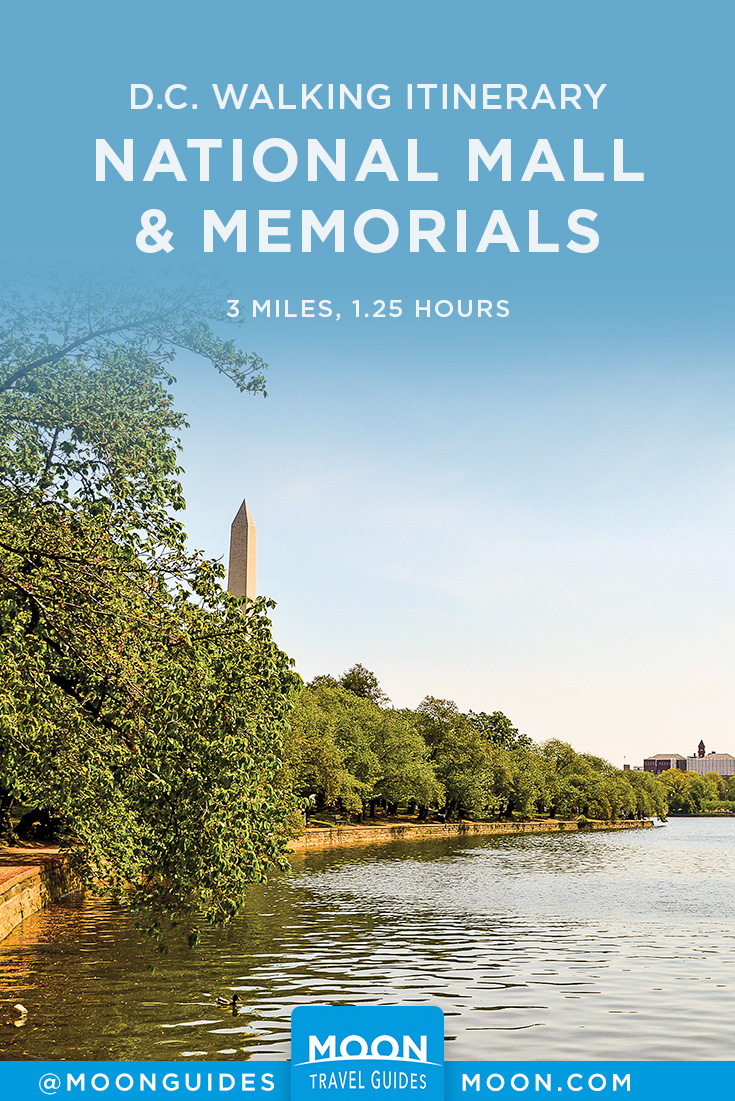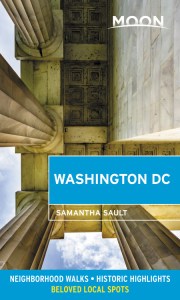Walking DC: The National Mall & Memorials
For a history lesson on foot, head to the west side of the National Mall, where you’ll find a maze of memorials set among idyllic grassy areas. It’s possible to power through this walk in less than two hours, but it’s better to budget up to three hours to fully take in the grandeur of the monuments (and take plenty of photos).
To avoid crowds, try the walk in the early morning or dusk. Taking this walk during peak cherry blossom bloom, usually around late March to early April, should be on your travel bucket list—though you’ll need to add at least one hour to your walking time to get around the Tidal Basin, which will be packed with tourists.

Start this walk at the corner of 17th Street NW and Constitution Avenue NW. It’s easily accessible by foot from downtown and Dupont Circle.
Total Distance: 3.1 miles (5 kilometers)
Walking Time: 1 hour and 15 minutes
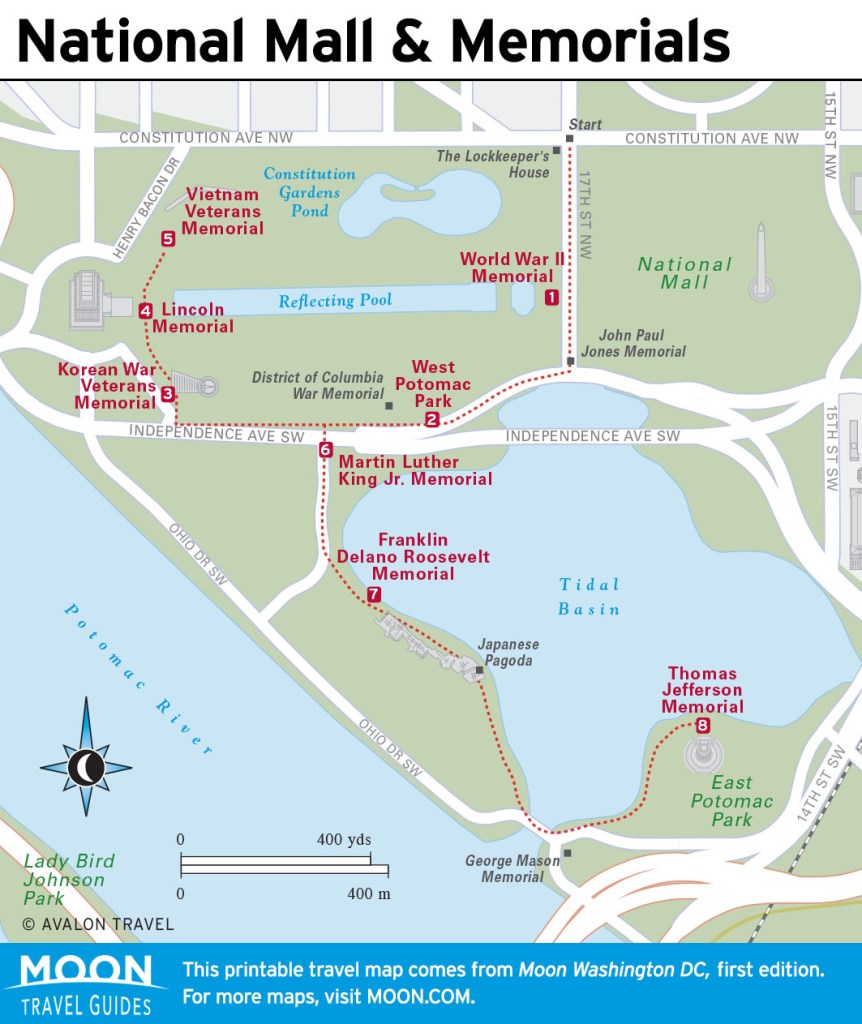
Walking south, you’ll pass the Lockkeeper’s House on your right, the small stone house for the lockkeeper who raised and lowered the C&O Canal lock, and the oldest structure on the National Mall. Walk two minutes down this block to approach the World War II Memorial on your right; you can’t miss the 56 stone columns. You’ll have a great view of the Washington Monument to the east and the Lincoln Memorial to the west, but keep walking southwest on the sidewalk along Homefront Drive SW. To your left is the John Paul Jones Memorial, a statue honoring the Revolutionary War hero considered the “Father of the U.S. Navy.”
Homefront Drive runs into Independence Avenue SW. Keep heading west on Independence; you’re in the heart of West Potomac Park. On the right you’ll pass a circular, marble structure, the District of Columbia War Memorial, honoring the 499 Washington DC residents who died serving in World War I.
Newsletter Signup
By clicking ‘Sign Up,’ I acknowledge that I have read and agree to Hachette Book Group’s Privacy Policy and Terms of Use
To see the Vietnam and Korean War memorials, along with a closer look at the Lincoln Memorial, continue west on Independence Avenue SW for about five minutes. The Korean War Veterans Memorial will be on your right at the stoplight near David French Memorial Drive SW. Take in the 19 figures representing soldiers from all branches of the country’s military. Get up close and you’ll see for yourself the stunning detail imbued in each statue.
Take the path leading northwest to reach the Lincoln Memorial. Climb the steps to get an up-close view of the iconic statue of a seated Abraham Lincoln gazing toward the Reflecting Pool.
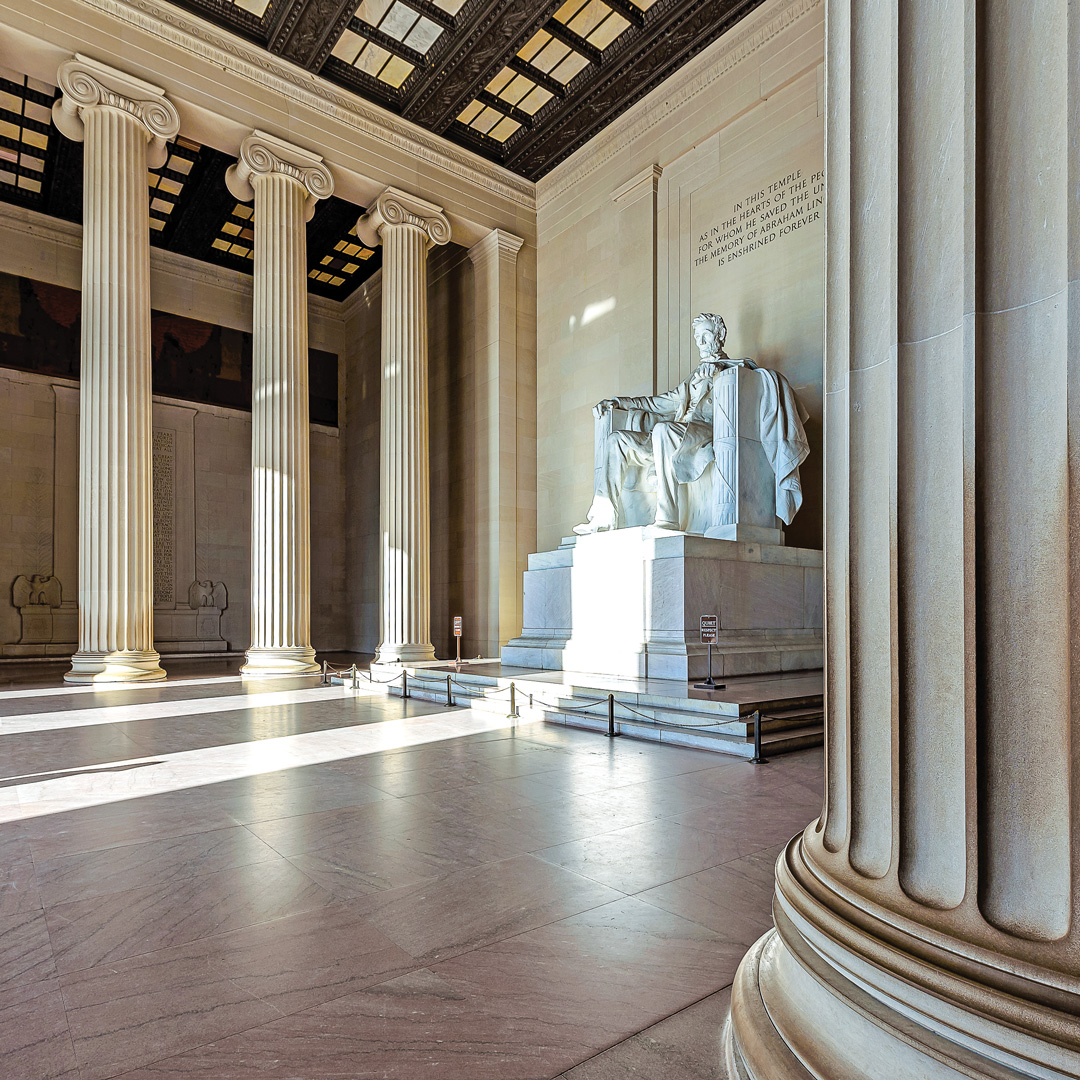
Next, take one of the paths headed northeast to reach the Vietnam Veterans Memorial. (If you get disoriented, look for rectangular gray signs pointing you toward major sights as well as tourist information and facilities.) Absorb the scale of the Vietnam War as you scan the 58, 315 names of the Americans killed or missing in action that are engraved on the Memorial Wall. Retrace your steps to Independence Avenue, then head east until you reach West Basin Drive SW, about five minutes.
At West Basin Drive SW, cross the street to head south to the Martin Luther King Jr. Memorial. Keep walking south, through the “mountain of despair” to the “stone of hope,” structures that represent a line from Dr. King’s “I Have A Dream” speech. Stand as close as you can to the sculpture of MLK to feel the enormous impact he had on our nation, then walk back to the railing at the Tidal Basin to see him emerging from the mountains.
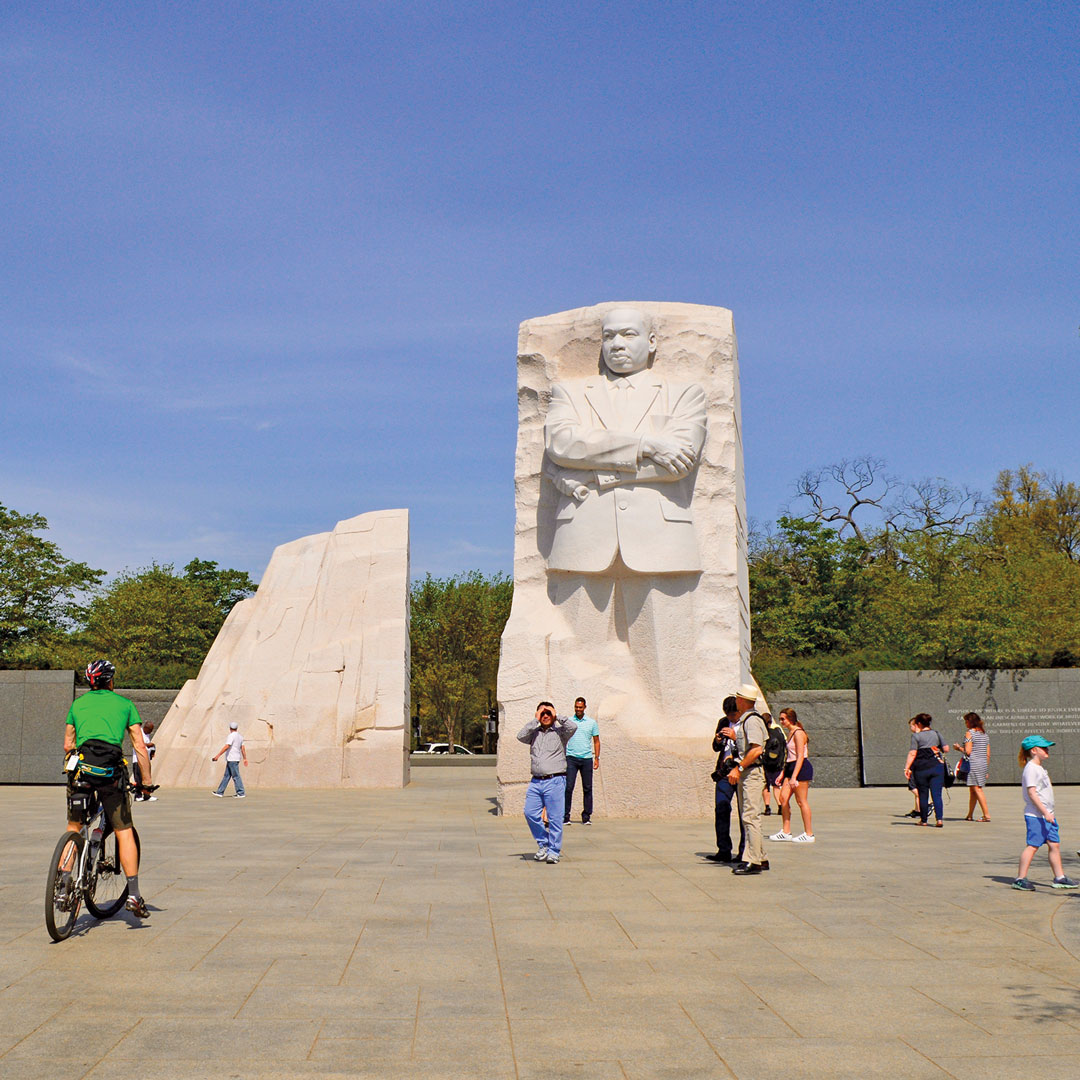
From here, continue walking south just under half a mile on the path around the Tidal Basin to reach the Franklin Delano Roosevelt Memorial, where you can spend time exploring and taking photos of the life-size statues of FDR and First Lady Eleanor Roosevelt. Walk up the stone steps to enter the memorial at Room One, which represents Roosevelt’s first presidential term, during the Great Depression. (Backtrack a bit to visit the Prologue Room, which was added later to accommodate a statue of FDR in a wheelchair. It’s to the right by the visitor center once you’re inside.) Continue south through the memorial, which guides you chronologically through each of Roosevelt’s four terms and his death.
Exit the memorial on the south end to return to the Tidal Basin path. Look for the Japanese Pagoda, a 17th-century stone structure given to the United States by the mayor of Yokohama, Japan, in 1957. It symbolizes the friendship between the two nations.
Keep along the asphalt path around the Tidal Basin for views of the Washington Monument and the Thomas Jefferson Memorial glimmering on the water. During cherry blossom season, this path is covered in pink blooms—and people.
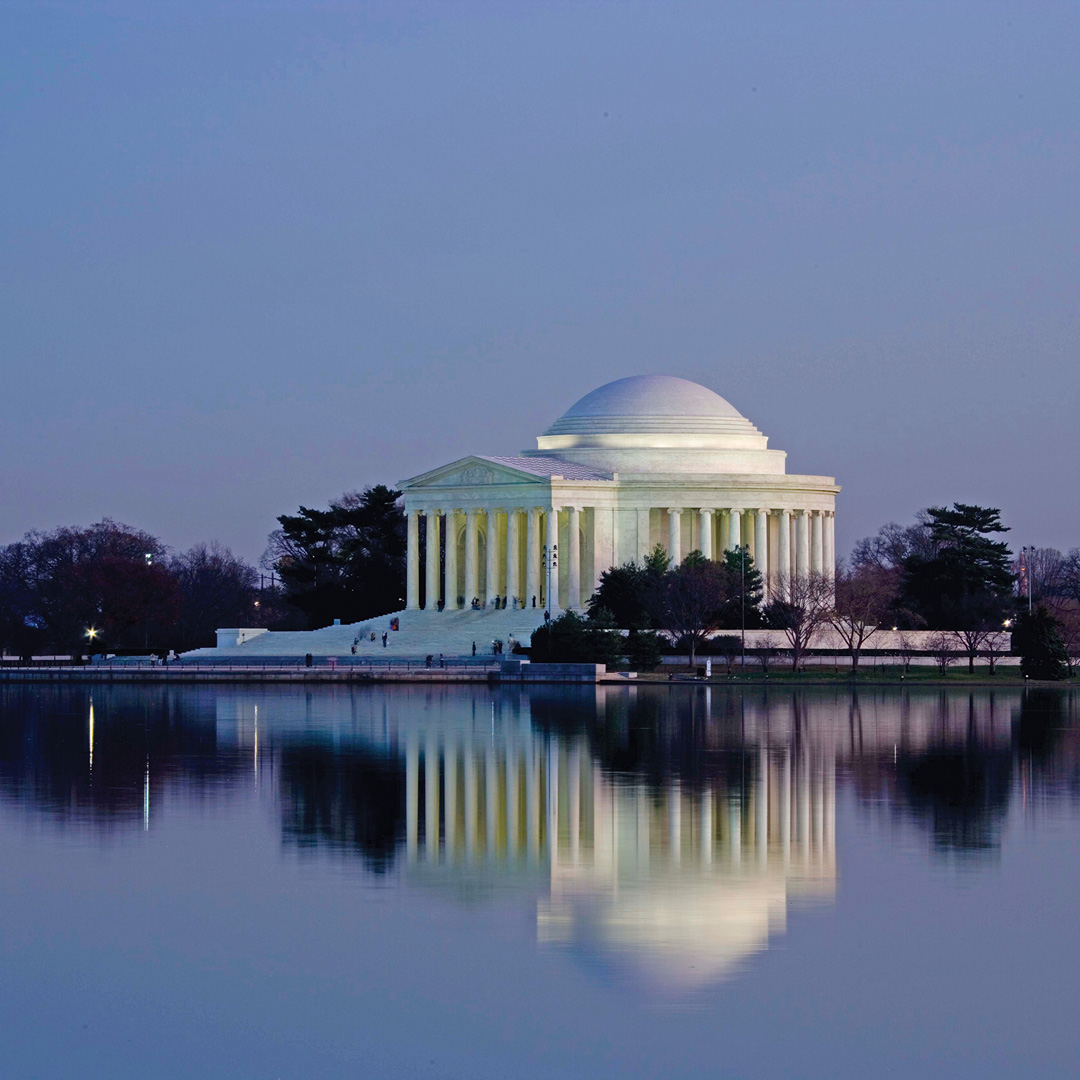
Cross the bridge at Ohio Drive SW and approach the George Mason Memorial, honoring a lesser-known Founding Father who did not sign the Declaration of Independence because it did not contain a bill of rights or abolish slavery. It’s looking a little worse for the wear, but you can relax on the benches under the trellis, next to the bronze statue of George Mason. From here, walk east on East Basin Drive SW and turn left to approach the Thomas Jefferson Memorial. Walk counterclockwise around the memorial to approach the stone steps and enter the open-air memorial, where you’ll see the 19-foot statue of Jefferson and quotations from his writings.
From here, you have options: Walk back to the east side of the National Mall for an afternoon at a museum, or go southeast to East Potomac Park and Hains Point for a scenic walk. If you do head to the park, stop at the East Potomac Golf Course and Driving Range for a bottle of water if you plan to walk the 1.8 miles to Hains Point.
Newsletter Signup
By clicking ‘Sign Up,’ I acknowledge that I have read and agree to Hachette Book Group’s Privacy Policy and Terms of Use
Pin For Later
